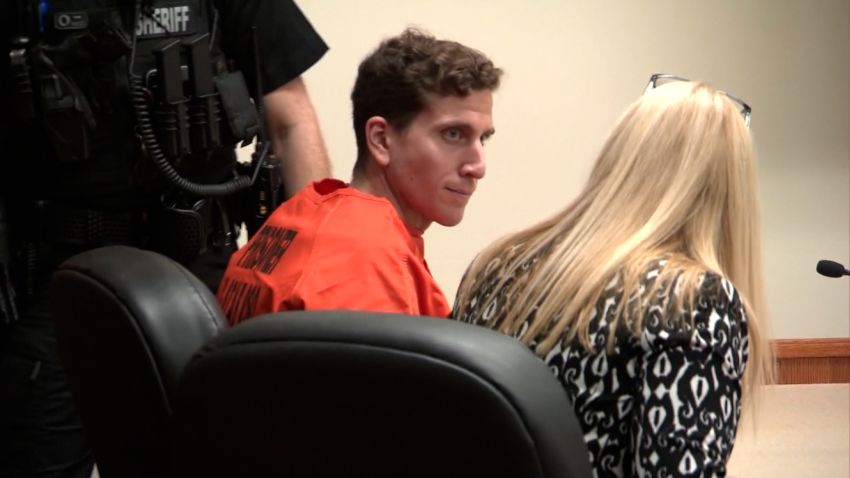Editor’s Note: Rachel Monroe is a journalist and the author of “Savage Appetites: True Stories of Women, Crime, and Obsession.” Her work has appeared in Best American Travel Writing 2018, The New Yorker, The Atlantic and elsewhere. The views expressed here are her own. Read more opinion at CNN.
For as long as humans have consumed media, we have been drawn to stories about the dark corners of human experience. Murder ballads and popular songs recount gruesome deaths. In the 18th and 19th centuries, cheap publications detailing scandalous crimes — “Horrid brutish and bloody murder” and promising “Awful disclosures!” — circulated widely.
It’s much the same with the “true crime” genre that’s all over cable television, streaming services and podcast charts – stories that detail the actions of the murderous criminal, the vulnerability of his victim and how he almost got away with the evil deed.
An unsolved crime troubles our desire for certainty, answers and justice. It’s tempting to go over the facts of the case again and again, hoping to find the one piece of information that will unlock everything and bring closure. That certainly has proved to be the case for the awful murders of the four college students — Kaylee Goncalves, Madison Mogen, Ethan Chapin and Xana Kernodle — stabbed in Moscow, Idaho.

Murders have always been a particular subject of public fascination. Homicides that get the most coverage, however, tend to be the least representative. This particular case had many of the hallmarks of the kind of killings that become national obsessions.
The murders were brutal, and for many weeks, the suspect remained at large. The victims were heartbreakingly young and had been killed at college, a place that many of us like to imagine as safe. The murderer had, inexplicably, fatally stabbed four roommates but left two others alive.
Immersing ourselves in such a horrific story can be an attempt, perversely, to make it less frightening: If we understand what happened, perhaps we can avoid falling victim ourselves. Some true crime enthusiasts I’ve spoken with told me they were driven by empathy. They felt that staying up late, reading about a case, was a way of connecting to the victims, of not letting them be forgotten.
Then, of course, there are the less-flattering motivations. For some people, consuming true crime provides an opportunity to indulge their appetites for lurid details. For others, it’s an exercise in superiority: That happened to you because you were careless, or clueless or somehow deserved it. It would never happen to me.
True crime stories can bring out our best and worst instincts. Empathy can curdle into voyeurism; a desire for justice can cross the line into demands for vengeance.
After I wrote a book about women’s obsession with true crime, I largely stepped away from the genre. I thought I’d gotten over my own fascination, but the story of these four murdered college students got into my head. Before I went to bed, I’d visit various subreddits dedicated to the case — Moscow Murders; Idaho Murders — to see if any new details had turned up.
I scrolled through the victims’ social media accounts, staring at pictures of them giddy and full of life, which were almost unbearable to look at. I brought up the crimes at a dinner party before seeing everyone else’s stricken facial expressions and realizing, too late, that murders didn’t make for good dinner table conversation.
But the more time I spent reading about the case online, the more uneasy I grew. In their hunger for more details, some people seemed to forget that we were talking about a real tragedy that had happened to real people, and not an episode of television.
They discussed the case with the fervor of fandom and fumed that the police weren’t releasing more details. They speculated over who the killer’s “target” was, as if the storyline needed a main character. They pounced on anyone who had the bad luck to be loosely tied to the crimes – an awkward neighbor, a guy at the food truck at the same time as two of the victims, a random professor – treating them as potential culprits.
These amateur sleuths spun out wild theories, as if they expected a murderer with the convoluted motivation of a villain on an episode of “Criminal Minds.” They picked apart the victims’ lives, scrutinized their romantic choices and publicized their family members’ criminal records.
By late December, when police arrested a suspect at his parents’ house in Pennsylvania, national attention to the case had reached a fever pitch. Since his arrest, the suspect has been extradited from Pennsylvania back to Idaho and has been charged with four counts of first-degree murder and one count of burglary.
So far, the ultimate twist in the narrative around this case has been that the suspect was studying for his PhD in criminology: He was someone who might have been expected, once his education was completed, to help apprehend criminals. Instead, he has been charged with a horrific quadruple homicide.
Attention since the arrest has turned to the surviving roommates, particularly the young woman who, according to police, had seen a stranger leaving the house. Paralyzed by fear at the sight of a masked intruder in her home, she had retreated to her room and locked her door.
The way this young woman has been harassed is particularly egregious. It’s impossible for any of us to know how we would’ve responded. But plenty of people felt justified passing judgment on a person they don’t know, someone who just hours earlier had lost four friends in the worst way imaginable.
Certainly, fascination with the grisly murders in Idaho is understandable. It was a crime that seemed pulled from nightmares: a stranger coming into your home and killing you in your bed.
But the internet and true crime make for a dangerous mix. We’ve grown used to having so much information at our fingertips that our interest can easily slide into entitlement, as if we’re owed invasive details just because we’re curious. Social media’s incentives to maximize engagement spur users to speculate wildly.
But the friends, family, neighbors and school community touched by this crime don’t have the luxury of distance; for them, this case is all too real.
In our fascination, we sometimes find it easy to forget that our online posts can have real-world consequences. The one certainty is that most of the armchair sleuths and online gawkers will move on, but probably only after the next sensational crime starts making headlines.





